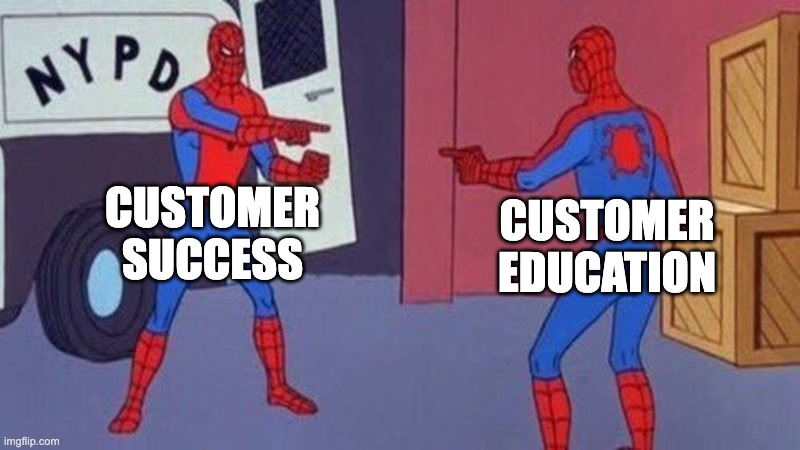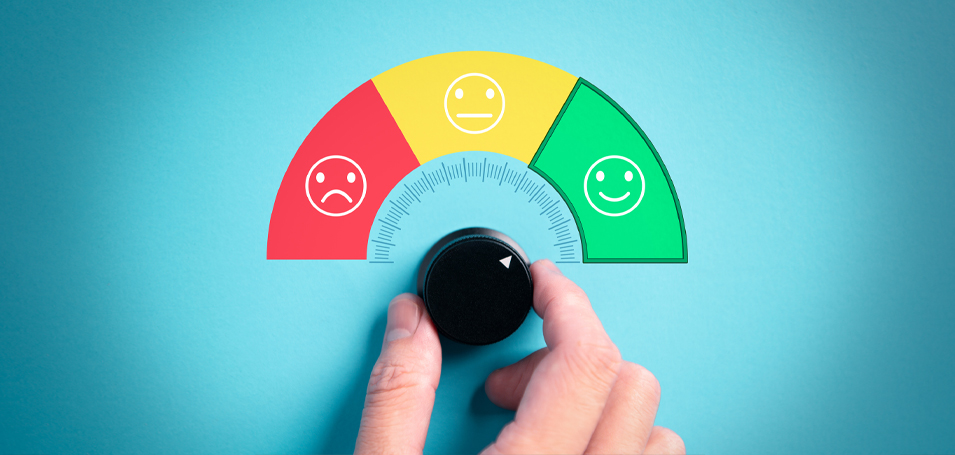I joined Thought Industries in 2020 thinking it’d be a completely new adventure. I had worked in the SaaS industry in Customer Success for many years, but never for a Customer Education company, and the values, goals, and measures of success were completely new to me… or so I thought.
When I first started, I assumed we’d be talking to customers about standard learning metrics (number of learners, course completions, certificates earned, etc.), and that our success plans and ROI programs would be around this measure of “consumption.” And, to be honest, these are the metrics that a large majority of customers often focus on. However, as much as I love these numbers (and as easy as they are to measure and track), they tend to be metrics that senior leadership may not truly care about. What they’re much more interested in is the business impact Customer Education is delivering — the “secret sauce” to building a sustainable, successful Customer Success program.
My “Aha” Moment on Customer Education and Customer Success
So, fast forward to present day, our Customer Success team has rapidly grown, and we have hundreds of customers whose use case and strategy we’re intimately familiar with. It’s our goal and mission to partner together to shift the mindset: Customer Success goals are Customer Education goals.
We want to shift the conversation from, “Our biggest success last year was engaging 300 learners,” to confidently stating, “Our biggest success last year was decreasing customers’ time-to-value by 20%,” or even, “We’re now able to correlate customers who are certified in their first 60 days with a 78% increased likelihood to renew.”
When the CS team realized we needed this documented, we came together to create a library of common business impacts that Customer Education teams should be focused on. Our list looked something like this:
- Decrease client first time-to-value
- Decrease days needed to onboard
- Decrease support tickets submitted
- Decrease “human” touch points needed
- Increase CSAT and NPS scores
- Increased product adoption and usage
- Increase retention rates
- Increase expansion
I stepped back, looked at the list, and realized that these were the exact same metrics that we were hyper-focused on ourselves in Customer Success. It was that moment that things really clicked, and it was a massive “lightbulb” moment, (but also an “oh, duh, James” moment).
I finally truly understood that Customer Education, although not directly responsible for Customer Success metrics, had the opportunity to be the most important foundational layer for my team.

It was kind of like the Spiderman meme came to life with Customer Success and Customer Education pointing to each other… Although they’re completely different functions and different teams, their goals and the ultimate value they are working toward is more or less the same.
Layering Customer Success and Customer Education
After coming to this (maybe common) understanding, I started thinking about how the parallel track of Customer Education overlays on a Customer Success model. To do this, I decided to look at Customer Education through the lens of a model often used in Customer Success: “Customer Success = Education, Inspiration, and Impact.”
Let’s discuss the Customer Education team’s role in each bucket:
Step 1: Educate Your Customers
For education teams, this is no shock – and often the easiest “box to check” – but what I think the slight shift for them to consider is what they’re trying to change in clients’ behavior. I always recommend starting with one area you hope to impact: With 90% of the customers I talk to every day, Customer Education teams start with onboarding content. They want a new customer to be able to come onto their platform and have “self-serve” materials available to them, so that their own Success or Implementation teams don’t have to constantly conduct demos or training.
It’s definitely a good use case, but to set yourself up for success, don’t just immediately dive into building a bunch of “how-to” product training courses. Instead, meet with your internal stakeholders and ask, “How do we define an onboarded customer?” Ultimately, what you want here is some retroactive data analysis; How has the business historically defined an onboarded customer? How many customers have been onboarded? How many days did it take them? What was the average # of FTE hours needed to onboard them? These are benchmark data points you’ll want to have.
For us internally, our implementation team used to focus on customers launching their academy publicly; that was an “onboarded” customer. However, we’ve recently shifted this model to key deliverables that need to be met by a client, ultimately leading up to a metric of “first time-to-value.” Often, companies can be so focused on “onboarding,” but if you truly want to focus on business impact, consider shifting your focus to “decreasing time to first value.”
Step 2: Inspire Your Customers
This is an area where I think there could be a lot of opportunity for Customer Education teams. With almost every early-stage learning program I talk with, the priorities directly align to new training materials for the product, or keeping up with documentation for new features. However, as our Maturity Model for Customer Education indicates, using industry topics and extended thought leadership tends to drive the education of a Stage 5, fully matured, advanced learning program. I would encourage Customer Education teams to think about how they can bring in “inspiration” earlier on in the program.
What does “inspiration” mean in this context? Hands down, the number one thing I’m asked is, “What other customers have done this? Can you share what they’ve done?” People are hungry to be inspired and intrigued by new ideas. The biggest buzz word in Customer Success is “best practices,” so how do we start adding this level of hunger for more ideas, more options, other programs, things they haven’t thought of yet. Your comprehensive course on “How to set up email configuration,” could easily be a “how-to” document in your knowledge base, so you can focus time and resources on a course like, “Learn the Top 10 Customer Use Cases to Get the Most out of Product Emails.” With this shift, the business impact you open the door to measuring is CSAT, NPS, and Product Adoption. And, longer-term, we know these have a direct correlation to retention.
Step 3: Highlight Your Impact
While this step may feel repetitive, in reality, demonstrating impact is what we’re most focused on in Customer Success, because it’s where our customers are really struggling. I always say, “We can provide you half the story with our data, but you have to provide the other half.” We may have all the consumption data, which we’re happy to share, but only our customers have access to the “pay off” via a support ticket system, product usage tracking tools, CRM, an NPS program, and more.
Tying all of this together can be intimidating for many, and often requires a BI connection tool (or an awesome in-house analyst). However, I always tell my customers, “Start by just highlighting numbers.” No matter what results you find, data starts the conversation with your leadership and shows how Customer Education can touch almost every line of business.
Here are a couple of example metrics I recommend with my customers:
- Connect Learning with ARR. Look at your learning data from the last quarter, and find the number of customers who completed courses, then get the total ACV/ARR for them. It may be a vanity metric, but it can help you become more comfortable saying, “Our team influenced $700K in ARR.” That’s a big shift from just saying, “We had 120 learners finish a course.”
- Connect Learning with Account Health. With that same data from last quarter, pull a list of 20 customers into a .csv that completed learning content. Then, find a control group of a similar cohort of 20 companies who did not engage with education. Use those two groups to look at the differences in account health. What’s the average # of support tickets submitted by each cohort? The average NPS? Get comfortable doing these quick analyses and discovering the story the data tells you. And, if it doesn’t tell a good story multiple quarters in a row, it may be time to “hold up a mirror” and ask what you’re missing.
As you evolve, quarter-over-quarter or year-over-year, these correlation metrics will get stronger and stronger. As Customer Education begins reporting these business impact metrics, Customer Success will immediately recognize the shared goals and priorities for your business – strengthening that partnership for the benefit of the organization.
How Customer Success & Customer Education Can Work More Closely
So, how have we worked on this internally to bridge the gap between Customer Success and Customer Education? Well, to start, we are in the middle of this curve; both our Customer Education and Customer Success teams grew massively in 2021. I’ve had the extremely lucky privilege to work closely with Sandra Elliot and our education teams to ensure we are focused on key “needle-moving” initiatives. Our prime example of this is a recent blog we published with our initial results. The key finding here that immediately resonated with Customer Success leaders is that customers who consumed our academy content were 8X more likely to renew. This data point alone launched us into 2022 where we’ve set OKRs, appointed steering committees, and designed roadmaps to ensure that our goals are aligned, shared, and measured (through a business impact lens). Our two pointing Spidermen are slowly moving more and more into a singular superhero… Thor? Or maybe Iron Man?



